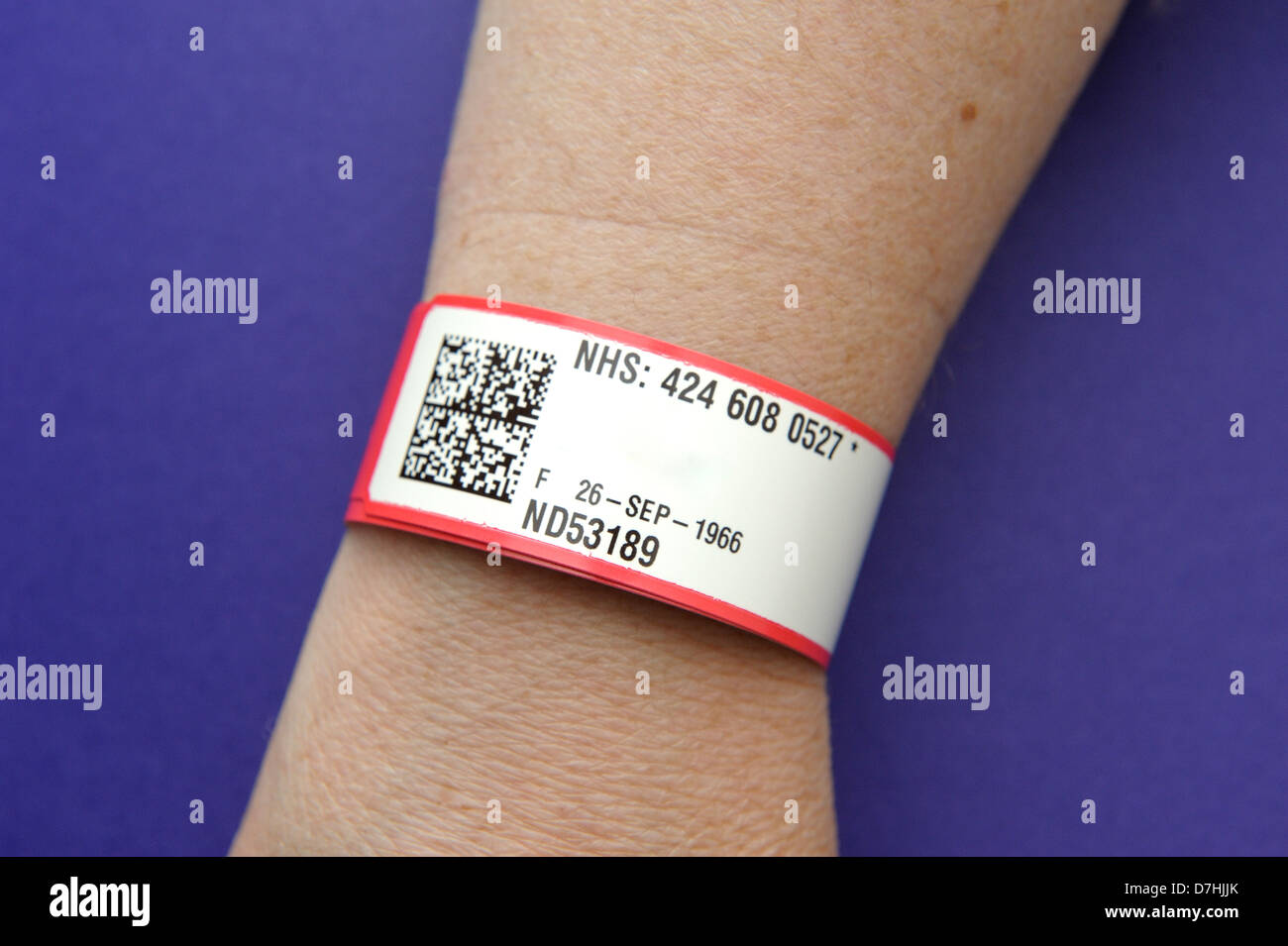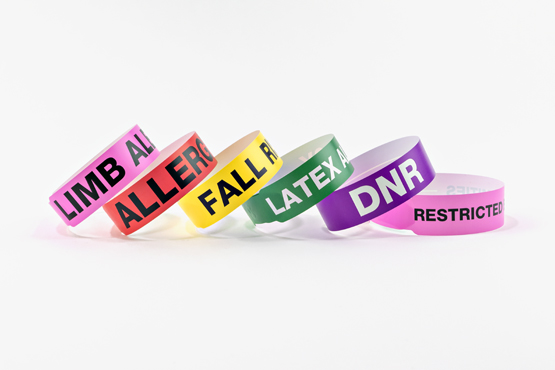The Patient Identification Band and HIPAA: What You Must Comply With
The Patient Identification Band and HIPAA: What You Must Comply With
Blog Article
The Function of Client Recognition Band in Fighting Medical Errors and Improving Outcomes
In health care, patient recognition bands are much more than just wristbands; they're essential tools that help stop mistakes and improve outcomes. When you assume about the threats entailed in misidentification, it becomes clear how crucial these bands are in making sure individual security.
Comprehending Person Recognition Bands
Client identification bands are important devices in healthcare settings, making sure that clients receive the proper therapies and medicines. These bands usually consist of vital details, such as your name, day of birth, and an unique identification number. When you show up at a medical care center, team participants rapidly scan your band to match you with your clinical records, treatments, and suggested drugs.
Understanding exactly how these bands job can enhance your experience and safety. They not only serve as an aesthetic pointer for medical care providers however likewise aid to stop mistakes and mix-ups. You'll typically see a barcode or QR code on the band, which enables fast digital verification of your identification.
Significance of Accurate Person Recognition

Effect on Person Safety And Security
When medical care experts can not accurately identify clients, the danger of mistakes increases substantially, jeopardizing safety and security and therapy end results. Accurate client identification is crucial for providing ideal treatment. It ensures that you receive the correct therapies, procedures, and interventions tailored to your particular needs. When mistakes happen due to misidentification, the repercussions can be extreme, ranging from delayed treatments to unnecessary procedures. Client identification bands work as a simple yet effective tool to decrease these dangers. By putting on a band that plainly shows your details, you help medical care carriers validate your identity prior to any kind of treatment is carried out. This essential action cultivates a safer medical care setting, eventually improving your general experience and end results. Your safety and security is critical, and exact recognition is crucial to accomplishing that.
Lowering Drug Mistakes
When you put on a person recognition band, medical care professionals can quickly validate your identification before administering any kind of medication. It's vital that you keep this band on during your stay, as it acts as a safeguard versus potential errors. Keep in mind, your safety and security is a top priority, and your identification band plays a significant function in guaranteeing you receive the right therapy every time.
Enhancing Clinical Workflow Efficiency
While person identification bands may appear like a minor detail, they significantly enhance medical workflow effectiveness by simplifying processes within healthcare setups. When you properly determine patients, you decrease hold-ups and minimize the need for recurring checks. This permits you and your group to concentrate more on direct individual care instead than management tasks. With legible and clear bands, you can rapidly access essential info, making sure that treatments and medications are provided correctly. In addition, these bands facilitate smoother interaction amongst doctor, lowering complication and fostering partnership. By integrating person identification bands right into your operations, you not only improve performance but additionally add to better individual results and contentment, making your work much more efficient and rewarding.
Common Medical Errors Linked to Misidentification
Misidentification can result in serious medical errors that put individuals in danger. You may come across concerns like medicine management blunders, incorrect surgeries, or laboratory examination misinterpretations - Patient Identification Band. Recognizing these mistakes is vital for improving individual safety and security and care
Medicine Administration Errors
Medication management mistakes are amazingly usual in healthcare settings, with studies revealing that virtually 1 in 5 individuals may experience a blunder as a result of misidentification. These errors can happen when a client obtains the incorrect medication, dose, or management route since their identification isn't precisely validated. Imagine getting a medicine intended for another person; the repercussions can be severe, sometimes bring about damaging reactions and even deaths.
Using an individual recognition band notably lowers these threats by making certain that doctor can swiftly confirm your identification. When everybody associated with your treatment is certain in that you are, the opportunities of receiving the correct medicine increase substantially. This simple yet reliable tool plays a vital duty in enhancing client safety and boosting general health care outcomes.
Surgical Procedure Mistakes
Mistakes during surgical procedures can have devastating impacts, usually stemming from the failure to accurately recognize patients. Having a trustworthy patient identification band can significantly decrease these mistakes. By prioritizing accurate individual recognition, you can aid prevent medical errors and boost end results for on your own and others.
Lab Test Misinterpretations
When you think concerning the impact of individual misidentification, lab examination false impressions could not be the initial issue that comes to mind, but they can lead to significant health and wellness dangers. Properly recognizing people with precise recognition bands assists guarantee that laboratory tests are linked to the appropriate individual. By lessening misidentification, you lower the risk of unsafe mistakes and boost overall patient safety and outcomes.
Technologies Enhancing Person Identification Bands
As healthcare remains to progress, innovations check here enhancing patient identification bands are becoming increasingly essential for assuring security and efficiency. You'll discover that developments like RFID (Superhigh Frequency Identification) and NFC (Near Area Interaction) innovation make client recognition bands much more trustworthy. These attributes enable fast scanning, reducing the opportunities of misidentification.

Moreover, mobile applications that communicate with these bands can additionally improve communication among medical care teams. By making use of these technologies, you can greatly improve and decrease errors patient outcomes. Welcoming these technologies assurances that patient recognition bands stay a main element in your healthcare setting.
Carrying Out Individual Identification Procedures
Implementing robust person identification methods is vital for guaranteeing that every individual gets the appropriate treatment right away. Begin by developing a standard procedure for individual identification at every touchpoint-- from admission to discharge. Use two special identifiers, such as the individual's name and date of birth, to lessen errors.
Train your team completely on these protocols, highlighting the relevance of double-checking info before proceeding with any kind of treatment or medicine (Patient Identification Band). Routine audits can help you identify spaces in conformity and locations for improvement
Don't forget to engage individuals in the procedure. By promoting a society of safety and security and alertness, you can aid avoid clinical errors and enhance general individual end results.
Instance Researches: Success Stories in Client Security
Success stories in individual safety highlight the considerable impact of effective person identification practices. In one healthcare facility, the application of color-coded wristbands led to a 40% reduction in drug errors. Personnel quickly acknowledged clients' allergies and conditions, making sure risk-free treatments.
One more facility took on barcode scanning for drug administration, which drastically lowered negative medication events. Nurses reported really feeling extra confident in their ability to verify patient identities and therapy plans.
In a pediatric system, moms and dads were involved in the identification procedure, causing improved communication and engagement. This collaboration not just enhanced safety and security but additionally fostered count on in between families and doctor.
These examples demonstrate that when you prioritize exact identification, you can considerably enhance individual results and safety and security. Accepting these techniques creates a culture of alertness, eventually making certain people get the appropriate treatment at the correct time, every time.
Future Trends in Individual Recognition and Safety And Security
With innovation progressing rapidly, the future of individual recognition and safety and security is poised for considerable improvement. You'll likely see a raised combination of biometric options, such as fingerprint or facial recognition, making identification much faster and a lot more precise. These approaches can aid eliminate errors triggered by similar names or miscommunication.
Expert system will certainly also play a vital duty, analyzing person data to flag potential threats and guarantee that security protocols are complied with consistently. If a patient's information doesn't match their treatment plan., imagine a system that informs you immediately.
Additionally, wearable modern technologies wikipedia reference might come to be prevalent, permitting real-time surveillance of client status and improving identification processes. As these advancements unravel, you'll discover that guaranteeing client safety and security ends up being more efficient and trusted. Accepting these trends implies staying in advance in the pursuit to lower clinical mistakes and improve general end results in healthcare.
Often Asked Inquiries
How Are Client Recognition Bands Developed and Preserved?
You create person recognition bands using specific software that produces one-of-a-kind barcodes or QR codes. Frequently update the details and examine to assure precision, and train staff on proper use to keep effectiveness with time.
What Products Are Used in Patient Recognition Bands?
Patient identification bands are usually made from resilient materials like plastic or plastic. You'll discover they're made to endure damage while making sure clear exposure of essential browse around this site details for doctor during therapy.
Can People Tailor Their Recognition Bands?
Yes, you can typically customize your recognition bands, depending on the center's policies (Patient Identification Band). Individualizing them with colors or styles may help share your preferences, making your experience really feel much more comfy and distinct throughout your care
How Commonly Should Patient Recognition Bands Be Changed?
You ought to change person identification bands whenever they end up being harmed, stained, or unreadable. Regular checks are important to guarantee they're exact and always clear, which assists maintain effective interaction and safety throughout your care experience.
If a Band Is Harmed or Lost?, what Happens.

If a band's damaged or lost, you need to inform the medical care group instantly. They'll replace it to ensure exact recognition, preventing potential mix-ups and making sure you get the right therapy and medications.
Person identification bands are crucial tools in healthcare settings, making certain that clients obtain the right therapies and medicines. By incorporating patient identification bands into your workflow, you not only enhance efficiency but also contribute to better client end results and complete satisfaction, making your job much more efficient and satisfying.
You'll discover that developments like RFID (Radio Frequency Identification) and NFC (Near Area Communication) technology make patient identification bands a lot more dependable.Executing robust patient recognition procedures is vital for making sure that every client receives the proper treatment without delay.Success tales in client safety highlight the substantial effect of effective patient identification methods.
Report this page